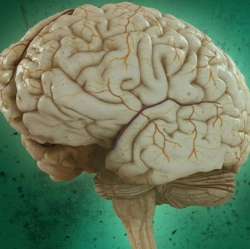
Roadside bombs, childhood abuse, car accidents—they form memories that can shape (and damage) us for a lifetime. Now, a handful of studies have shown that we’re on the verge of erasing and even rewriting memories. The hope is that this research will lead to medical treatments, especially for addiction and post-traumatic stress disorder (PTSD).
Researchers have known for decades that memories are unreliable. They’re particularly adjustable when actively recalled because at that point they’re pulled out of a stable molecular state. Last spring, scientists published a study performed at the University of Washington in which adult volunteers completed a survey about their eating and drinking habits before age 16. A week later, they were given personalized analyses of their answers that stated—falsely—that they had gotten sick from rum or vodka as a teen.
One in five not only didn’t notice the lie, but also recalled false memories about it and rated that beverage as less desirable than they had before. Studies like these point to possible treatments for mental health problems. Both PTSD and addiction disorders hinge on memories that can trigger problematic behaviors, such as crippling fear caused by loud noises or cravings brought about by the sight of drug paraphernalia.
Several studies have found chemical compounds that can be used to subdue or even delete memories in mice (and maybe someday in people). In June, a report led by an Emory University researcher showed that SR-8993, a drug that acts on the brain’s opioid receptors, can prevent a fear memory from forming. Researchers strapped mice to a wooden board for two hours—a stressful experience that later gave them a heightened sense of fear similar to PTSD. But mice given SR-8993 before or after the stressful incident were less likely to end up this way.
Another study identified a drug, Latrunculin A, that can erase memories days later. The researchers trained rodents to consume methamphetamine in an environment with distinctive visual, tactile, and scent cues such as black walls, gridded floors, and the scent of vanilla or peppermint. Rodents that were injected with Latrunculin A two days later didn’t seek out meth when returned to that environment, but others did. Latrunculin A is known to mess up scaffolding that supports connections between neurons. Considering how broadly these two drugs affect the brain, there’s a possibility of serious side effects.
